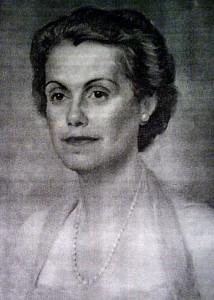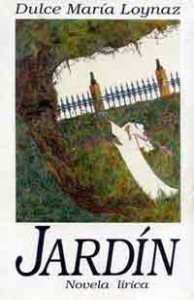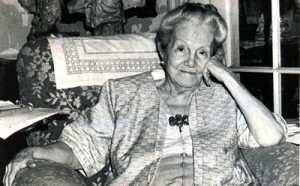 Dulce María Loynaz was the daughter of the famous General Enrique Loynaz del Castillo, a hero of the Cuban Liberation Army and author of Cuban National Anthem lyrics Dulce María was born in Havana City, on December 10, 1902, in a family of great sensibility towards artistic and cultural manifestations and deep patriotic feelings.
Dulce María Loynaz was the daughter of the famous General Enrique Loynaz del Castillo, a hero of the Cuban Liberation Army and author of Cuban National Anthem lyrics Dulce María was born in Havana City, on December 10, 1902, in a family of great sensibility towards artistic and cultural manifestations and deep patriotic feelings.
Although Dulce María lived a sheltered life during her childhood, in her early adulthood her life was much more adventurous, including experiences available at that time only to wealthy young women, even outside of Cuba. She published a number of poems in her teens and twenties. She completed the Doctorate of Civil Law at the University of Havana in 1927. She was a practicing lawyer even though she disliked it, but stopped practicing in 1961.
Loynaz began writing Jardin in 1928 the year after she earned the Doctor of Law degree from the University of Havana and completed the novel in 1935, shortly after Cuban women obtained the right to vote. During these early decades of the twentieth century, a time of great feminist activity, a dynamic and effective women’s movement flourished in Cuba and women’s rights became part of the Cuban political consciousness. The feminist attitude Loynaz displays in Jardin is tied strongly to the image of the city. The novel begins and ends with the heroine looking out from the garden toward a city that resembles Havana.
Her book Poemas sin nombre (Untitled Poems) was translated to Italian on 1955. She offered conferences and readings, not only in Cuba but also in Spain and Latin America. She was elected as member of Arts and Literature National Academy on 1951, of the Cuban Academy of Language on 1959 and the Spanish Real Academy of Language on 1968.
The Real Academy of Spanish Language nominated her to Miguel de Cervantes Prize in 1984. In 1985, Poesías Escogidas (Selected Poems) was published in Havana and her poems book Bestiarium (written before 1959). During these years, she gave conferences, speeches, received prizes and condecorations and was bestowed for different Cuban cultural institutions.The sobriety of her lyric expression, her exquisite handling of language and master use of Castilian Language were the main reasons to take into account to confer her The King Alphonse the Wise Order (Spain) and on November 5, 1992, the Miguel de Cervantes y Saavedra Literature Prize, honorable distinction she received in Spain in 1993 from King Juan Carlos I’s hands. This is considered like the Nobel prize in the world of the Spanish Literature. 
In 1959 she voluntarily stopped writing and publishing in Cuba. In a situation such as the Cuba of the past 40 years, it is not surprising that a person as private in temperament as Dulce María Loynaz would seclude herself, or that her public statements have always been extremely discreet, patriotic and yet non-political. More perplexing is the fact that, according to all her closest friends, she entirely stopped writing poetry when the Revolution triumphed in 1959. Although her work was characterized by so many of her friends as a private vocation, perhaps the total disappearance of the social world which fostered it, silenced her.
The discovery of her work by a large and enthusiastic audience in her home country when she was in her 80’s, really for the first time and after more than 25 years of internal exile, must have been like the return of the dove in her poem, “Noah,” carrying the green branch that signifies a safe harbor. “Fe de vida” (Life’s Faith) her last work, saw the light on 1993, while celebrating in Pinar del Río, the First Ibero American Meeting about her work and life. Furthermore, some texts from her delicate creation have been musicalized by different singers/writers.
She received several awards among them: National Order of Carlos Manuel de Céspedes, Order of Félix Varela of the Culture, National Culture Distinctive Award, and the Alejo Carpentier Medal (Cuba). She was awarded the Cuban National Prize for Literature (1987).
Dulce María Loynaz died in 1997 and was interred in the Colon Cemetery, Havana.
Agencies/Various/Wiki/InternetPhotos/youtube/thecubanhistory.com
The Cuban History, Hollywood.
Arnoldo Varona, Editor.



 Dulce María Loynaz, poet, novelist. (born in Havana) ** Dulce María Loynaz, poetisa, novelista.
Dulce María Loynaz, poet, novelist. (born in Havana) ** Dulce María Loynaz, poetisa, novelista.